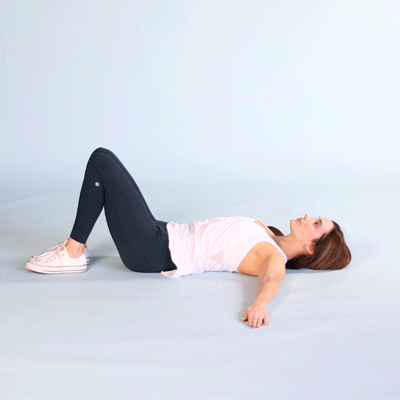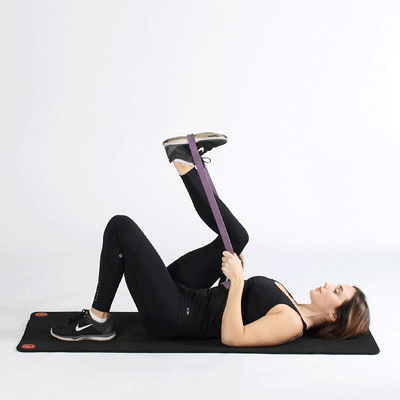How To Sleep With Sciatica To Finally Get A Comfortable Sleep: 6 Best Stretches Included
Many patients complain of sleepless nights because of their sciatica, a painful condition caused by compression of the sciatic nerve. When compressed, the sciatic nerve can cause shooting or burning pain down the back of the leg, which can impact sleep quality and also cause significant discomfort throughout the day.
However, with the right help and support, it’s possible to find the best way to sleep with lower back pain and sciatica. Some of the helpful strategies for how to sleep with sciatica pain include seeing a physical therapist, finding the right mattress and pillow, and creating a supportive sleeping environment.
Keep reading to learn more about the best practices for getting a good night’s sleep with lower back pain.
How Sciatica Affects Sleep
Sciatica is a painful condition that affects the lower back. It is caused by irritation or compression of the sciatic nerve, which is the largest nerve in the body. Some of the reasons for sciatica can include an injury to the spine, disc herniation where the intervertebral disc between the vertebrae bulges, and spinal stenosis. Other causes can include muscle spasms, osteoarthritis, and cancer.
As a result, sciatica can present with a range of different symptoms, with the most common being radiating or burning pain that shoots down the back of the leg. Sciatica can also disrupt sleep, making it harder for patients to find a comfortable position at night. Sleep deprivation can increase pain sensitivity and reduce the body’s natural healing processes, further feeding into the pain cycle.
For this reason, it’s critical to consult a trained health professional for a proper and thorough assessment in order to get an accurate diagnosis before starting any treatment.
How To Sleep With Sciatica
A great starting place for finding the best way to sleep with sciatica is physical therapy. Physical therapists are trained to assess and treat musculoskeletal conditions like sciatica, and help patients find relief from their symptoms – including how to sleep with lower back pain and sciatica.
Here are some of the ways physical therapy can help with finding the best sleep position for sciatica:
Using The Right Mattress And Pillow
The best way to sleep with sciatica is on a comfortable mattress and pillow. No two mattresses and pillows are made the same, and a physical therapist can advise patients on what types may be best suited for them and their condition. These elements are the foundation of a good sleep, so it’s important to get them right.
Create A Healthy Sleeping Environment
One of the key ways to get a good night’s sleep is to create the best sleeping environment. Physical therapists can suggest strategies such as:
Reduce noise and light in the bedroom
Regulate the temperature of the bedroom
Get rid of any distractions before bed
Set regular sleep and wake up times
Stay consistent with a sleep schedule to help the body’s internal clock
Stretching And Exercising
Physical therapists can prescribe stretches and exercises that can help alleviate any painful symptoms from sciatica. This may include designing a pre-sleep stretching routine for improving sleep quality for patients with sciatica. A personalised exercise routine from a physical therapist can make all the difference to finding the best sleep positions for sciatica.
Finding The Most Comfortable Sleeping Position
There is no singular best way to sleep with sciatica. However, there are different options physical therapists can suggest to support the body when sleeping:
Back Sleepers: For patients that like sleeping on their back, it can be helpful to add a pillow under the knees to alleviate pressure on the spine.
Side Sleepers: For side sleepers, a pillow between the knees can be a helpful way to maintain alignment in the spine when sleeping.
Curled Sleepers: For patients that like sleeping in a fetal position, it can be helpful to hug a pillow to avoid too much pressure on one side of the body.
The Top 6 Stretches For Sciatica Pain At Night
There are several stretches that a physical therapist may prescribe for helping patients to sleep better. These include the following top stretches:
1. Child’s Pose
Child’s Pose is an exercise from yoga that can help relax the whole body and alleviate tension in the lower back.
For this exercise:
Start on all fours.
Gently reach your arms forwards whilst sitting back on your heels.
It can be helpful to add a cushion or pillow under the buttocks for support.
Return to the starting position.
2. Hip Flexor Stretch
Hip flexor stretches are a common exercise physical therapists use to stretch the muscles in the front of the hip which can get stiff with lower back pain.
For this exercise:
Start by lying on your back.
Bring one knee to your chest while keeping your other leg straight.
Hold for several seconds.
Repeat on the other side.
3. Figure 4 Stretch
The Figure 4 stretch is usually prescribed to alleviate muscle tension in the gluteal muscles, which the sciatic nerve travels through.
For this exercise:
Start in a lying position with both knees bent and feet flat on the floor.
Cross your right ankle over your left knee, forming the shape of a “figure 4”.
Relax into the position.
Repeat on the other side.
4. Gentle Lumbar Rotations
Lumbar rotations are a gentle way to reduce stiffness and restore flexibility to the lower back.
For this exercise:
Start by lying on your back with both knees bent.
Gently rock the knees to one side, ensuring there is no pain in the lower back.
Rotate the knees in the opposite direction.
Return to the starting position.
5. Pelvic Tilts
Pelvic tilts can take a little practice, but when performed correctly can help patients with sciatica and lower back pain.
For this exercise:
Start by lying on your back.
Slowly rotate your hips back to tilt the pelvis down, pressing the lower back into the floor.
Then, move the pelvis in the opposite direction to tilt the pelvis up and create a small arch in the lower back.
Touching the hips can help feel and guide the movement better.
Return to the starting position.
6. Supine Hamstring Stretch
The hamstring stretch can help address poor hamstring flexibility that can be associated with sciatica.
For this exercise:
Start by lying on your back (no pillow) with both legs bent.
Slowly lift one leg off the bed and reach to hold onto the thigh or calf.
Gently pull your leg towards you until you feel a stretch down the back of the leg.
Some patients may find it helpful to move slowly and use a strap for this stretch.
Repeat on the other side.
Make sure to speak to a physical therapist or doctor before starting any new exercises. They can help choose the right exercises for your condition, including the type, duration, and modifications for each movement.
Seeking Medical Help For Sleep Issues
Nighttime pain is a common symptom of sciatica, however it can also indicate something more serious is going on. Consult a doctor for red flags symptoms that include:
Severe, persistent, or unusual pain
Unrelenting pain that doesn’t go away despite home treatments like ice or heat packs and over-the-counter medications
Muscle weakness
Loss of bladder or bowel control
Book Now
Freedom From Fatigue
Sciatica can affect sleep quality and overall well-being. But it doesn’t have to be that way. With the help of a physical therapist, it is possible to get a comfortable and restful sleep.
Reach out to your local physical therapist for help with symptoms of sciatica.















